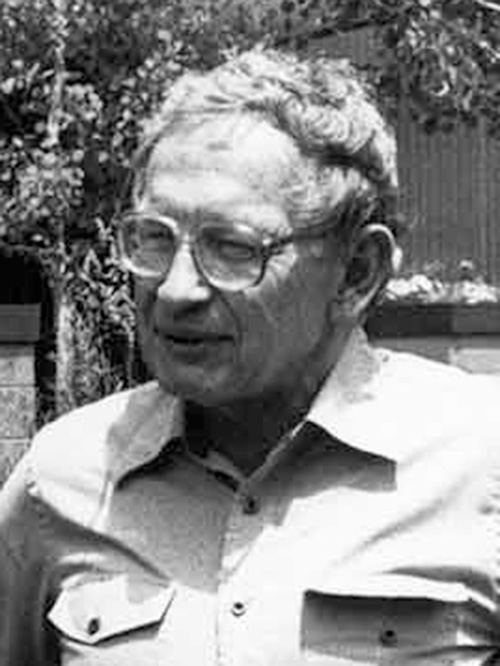IN MEMORIAM
Philip W. Anderson

Philip Warren Anderson, affectionately known as “Phil” to his friends and colleagues, left an indelible mark on the world of theoretical physics. His passing on March 29, 2020, marked the end of an era, but his legacy continues to illuminate the field. A true giant in his field, Anderson received the Nobel Prize in Physics and the National Medal of Science for his groundbreaking contributions to condensed matter physics.
Anderson’s journey into physics began in the Midwest, where his father served as a professor at the University of Illinois. After completing his undergraduate and Ph.D. studies at Harvard, he joined Bell Laboratories, a hub of scientific innovation. There, he made pioneering contributions in various areas of solid-state physics, including quantum antiferromagnets, electron localization due to disorder (known as Anderson localization), and the formation of local moments in metals.
One of Anderson’s most remarkable achievements was his articulation of the concept that “More is Different,” as expressed in his 1972 article. This idea emphasized the significance of emergence over reductionism in physics, elevating the field of condensed matter to the same intellectual level as fundamental physics. Anderson’s influence was so profound that conferences in the field frequently bore the subheading “topics of interest to P. W. Anderson.”
Anderson’s approach to physics was marked by intuition, deep insight, and an ability to convey complex ideas. His contributions spanned diverse areas, from Anderson Localization to Local Moments and Quantum Magnetism, Superconductivity and Superfluidity, Spin Glasses, and High-Temperature Superconductivity.
Anderson’s impact extended beyond scientific discoveries; it also encompassed his approach to collaboration. He worked with scientists from all backgrounds and countries, fostering an inclusive and diverse research environment.
In addition to his scientific achievements, Anderson played a pivotal role in the Aspen Center for Physics (ACP). His association with ACP began in the 1970s, and he continued to be an integral part of its scientific community. His dedication to the center and his passion for fostering young talent made a lasting impression.
Throughout his life, Anderson remained true to his Midwestern values, embracing an open and approachable demeanor. He welcomed fresh ideas and was a mentor to aspiring young physicists. His contributions to the world of physics, combined with his warmth and genuine spirit, left an enduring legacy that continues to inspire the next generation of scientists.
As the world celebrates his contributions to science, it is important to remember the role of his wife, Joyce Anderson, who provided unwavering support throughout his career. She was the steadfast force behind his scientific pursuits, allowing him to focus on his work.
In honor of Philip W. Anderson, the Aspen Center for Physics dedicated the Localisation 2020 conference to his memory, recognizing the profound impact he had on the field of theoretical physics and the nurturing environment he helped create at ACP.
Anderson’s work with the Aspen Center for Physics involved his positions as Chair of the Board from 1982 – 1986, a Trustee from 1976 – 1982, an Honorary Trustee from 1983 – 2020, and a General Member from 1976 – 2004. Anderson passed away in Princeton, New Jersey, on March 29th, 2020, at the age of 96.
A wonderful account of Anderson’s time with ACP, written by R.N. Bhatt, can be found here.

Positions Held
Trustee, 1976 – 1982
General Member, 1976 – 2004
Chair of the Board, 1982 – 1986
Honorary Trustee, 1983 – 2020
Awards
Nobel Prize for Physics, 1977
National Medal of Science, 1982